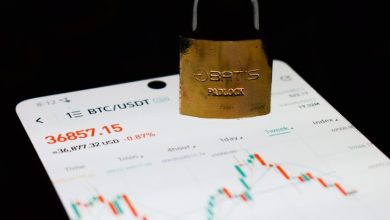Decentralized Finance (DeFi) and the Regulatory Void

- Understanding Decentralized Finance (DeFi)
- The Rise of DeFi Platforms
- Challenges Faced by Regulators in DeFi
- Navigating the Regulatory Landscape of DeFi
- Potential Risks and Benefits of DeFi
- The Future of Decentralized Finance
Understanding Decentralized Finance (DeFi)
Decentralized finance, also known as DeFi, is a rapidly growing sector within the cryptocurrency industry. It refers to financial services that are built on blockchain technology, eliminating the need for traditional intermediaries such as banks. DeFi applications allow users to borrow, lend, trade, and invest in a peer-to-peer manner, without relying on centralized institutions.
One of the key advantages of DeFi is its accessibility. Anyone with an internet connection can access these services, without having to go through the traditional banking system. This has opened up financial opportunities for people in underserved regions, who may not have had access to banking services in the past.
However, the decentralized nature of DeFi also poses challenges when it comes to regulation. With no central authority overseeing these platforms, there is a regulatory void that leaves users vulnerable to potential risks such as fraud, hacks, and scams. This lack of oversight has raised concerns among regulators and policymakers around the world.
Despite these challenges, the DeFi sector continues to grow at a rapid pace, attracting investors and developers alike. As the industry matures, finding the right balance between innovation and regulation will be crucial to ensuring the long-term success and sustainability of decentralized finance.
The Rise of DeFi Platforms
Decentralized Finance (DeFi) platforms have been on the rise in recent years, offering users the opportunity to engage in a variety of financial activities without the need for traditional intermediaries. These platforms leverage blockchain technology to create a more transparent and efficient financial system, allowing users to access services such as lending, borrowing, and trading without relying on banks or other centralized institutions.
One of the key advantages of DeFi platforms is their ability to operate without the need for traditional regulatory oversight. This has allowed them to quickly gain popularity among users looking for more freedom and flexibility in their financial transactions. However, the lack of regulation has also raised concerns about the potential risks associated with these platforms, including security vulnerabilities and the potential for fraud.
Despite these concerns, the popularity of DeFi platforms continues to grow, with more users flocking to these platforms in search of higher returns and greater control over their finances. As a result, regulators around the world are now grappling with how to effectively oversee and regulate these platforms to protect users while still allowing for innovation and growth in the DeFi space.
Challenges Faced by Regulators in DeFi
Regulators are facing numerous challenges when it comes to overseeing the decentralized finance (DeFi) space. One of the main obstacles is the lack of centralized entities in DeFi, making it difficult to hold any specific party accountable for compliance with regulations. This regulatory void raises concerns about investor protection and financial stability.
Furthermore, the global nature of DeFi platforms presents a jurisdictional challenge for regulators. With no physical location or clear legal framework, it is challenging to determine which regulatory body has authority over these platforms. This lack of clarity can lead to regulatory arbitrage and hinder effective oversight.
Another challenge faced by regulators is the rapid pace of innovation in DeFi. New products and services are constantly being introduced, making it difficult for regulators to keep up with the evolving landscape. This dynamic environment increases the risk of regulatory gaps and loopholes that could be exploited by bad actors.
In addition, the anonymity and pseudonymity offered by DeFi platforms pose a challenge for regulators in enforcing anti-money laundering (AML) and know your customer (KYC) regulations. Without proper identification processes in place, it becomes challenging to prevent illicit activities such as money laundering and terrorist financing.
Overall, regulators are grappling with the complexities of regulating the decentralized nature of DeFi while ensuring investor protection, financial stability, and compliance with AML/KYC regulations. Finding the right balance between innovation and regulation is crucial to fostering a safe and transparent DeFi ecosystem.
Navigating the Regulatory Landscape of DeFi
When navigating the regulatory landscape of decentralized finance (DeFi), it is crucial for participants to stay informed about the ever-changing rules and guidelines set forth by regulatory bodies. Due to the innovative and rapidly evolving nature of DeFi, regulators are often playing catch-up in terms of creating and enforcing regulations that are applicable to this space.
One of the key challenges in the regulatory realm of DeFi is the lack of clarity surrounding what constitutes compliance. As DeFi protocols operate in a decentralized manner, without a central authority overseeing their activities, it can be difficult to determine who is responsible for ensuring adherence to regulatory requirements.
Participants in the DeFi ecosystem must also be aware of the potential risks associated with non-compliance. Regulatory scrutiny and enforcement actions can have serious consequences, including fines, legal repercussions, and reputational damage. Therefore, staying abreast of regulatory developments and proactively addressing compliance issues is crucial for the long-term sustainability of DeFi projects.
Despite the regulatory challenges facing DeFi, there are steps that participants can take to mitigate risks and ensure compliance. Engaging with regulatory bodies and seeking legal counsel can help clarify regulatory obligations and ensure that DeFi projects are operating within the bounds of the law.
Overall, while the regulatory landscape of DeFi may be complex and uncertain, staying informed, proactive, and compliant is essential for navigating this evolving space successfully.
Potential Risks and Benefits of DeFi
When considering decentralized finance (DeFi), it is crucial to weigh the potential risks and benefits that come with this innovative financial system. Understanding both sides of the coin can help investors and regulators make informed decisions about the future of DeFi.
- Benefits of DeFi:
- 1. Decentralization: DeFi eliminates the need for intermediaries, providing users with more control over their assets and financial transactions.
- 2. Accessibility: DeFi offers financial services to individuals who are unbanked or underbanked, opening up opportunities for financial inclusion.
- 3. Transparency: Transactions on the blockchain are immutable and transparent, increasing trust and reducing the risk of fraud.
- 4. Innovation: DeFi allows for the development of new financial products and services that were previously not possible within the traditional financial system.
- Risks of DeFi:
- 1. Smart contract vulnerabilities: DeFi platforms rely on smart contracts, which can be prone to bugs and security vulnerabilities, leading to potential financial losses.
- 2. Regulatory uncertainty: The lack of clear regulations in the DeFi space can expose users to legal risks and make it challenging for regulators to oversee the market effectively.
- 3. Market volatility: DeFi assets are often highly volatile, posing risks of significant price fluctuations and potential losses for investors.
- 4. Lack of investor protection: Unlike traditional financial institutions, DeFi platforms do not offer the same level of investor protection, leaving users vulnerable to risks such as hacking and fraud.
Overall, while DeFi presents exciting opportunities for financial innovation and inclusion, it is essential to approach this space with caution and awareness of the potential risks involved. By staying informed and practicing due diligence, both users and regulators can navigate the evolving DeFi landscape with greater confidence.
The Future of Decentralized Finance
The future of decentralized finance (DeFi) is filled with both excitement and uncertainty. As this innovative technology continues to gain traction, many experts believe that it has the potential to revolutionize the traditional financial system. However, there are also concerns about the regulatory void surrounding DeFi, which could pose challenges in terms of security and investor protection.
Despite these challenges, the DeFi ecosystem is rapidly evolving, with new projects and platforms being launched regularly. Developers are constantly pushing the boundaries of what is possible with DeFi, creating innovative solutions for lending, borrowing, trading, and more. As the industry matures, it is likely that we will see increased collaboration between regulators and DeFi projects to establish guidelines and best practices.
One of the key benefits of DeFi is its ability to provide financial services to underserved populations around the world. By leveraging blockchain technology, DeFi platforms can offer lower costs, greater transparency, and increased accessibility compared to traditional financial institutions. This has the potential to empower individuals who have been excluded from the traditional banking system.



